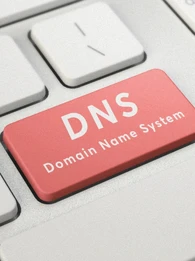
Digital twin technology is one of the most disruptive new tools in the world of digital transformation.
Whether it’s powering smart cities or making the development of everything from smartphones to wind turbines more efficient, the technology provides insights that can change how technology – and enterprises – work for the better.
According to a recent survey by MarketsandMarkets, the global digital twin market size in terms of revenue was estimated to be worth USD 10.1 billion in 2023 and is poised to reach USD 110.1 billion by 2028, growing at a CAGR of 61.3% from 2023 to 2028.
Powering this digital twin revolution are a number of key digital twin software solutions which provide a platform for enterprises big and small to embrace this powerful technology.
What is a digital twin?
A digital twin is a virtual replica of a real-world thing. This can be a physical object, like a jet engine or a building, or even a process, like manufacturing or traffic flow in a city.
The key is that the digital twin is constantly updated with real-time data from sensors on the physical thing it represents and uses simulation, machine learning and reasoning to help make decisions. This allows the digital twin to mimic the behaviour of the real thing very closely.
The first well-known implementation of a "digital twin" concept was introduced in a roadmap report by NASA's John Vicker to create simulations of spacecraft and capsules for testing.
In order to create and update a digital twin, you need a lot of data. This data can come from sensors on the physical object, from design documents, or from other sources. The studied object—for example, a wind turbine—is outfitted with various sensors related to vital areas of functionality.

These sensors produce data about different aspects of the physical object’s performance, such as energy output, temperature, weather conditions and more. The processing system receives this information and actively applies it to the digital copy.
After being provided with data, the digital model can be used to conduct various simulations, analyze performance problems and create potential enhancements. The ultimate objective of this is to obtain crucial information about the object of a system that can be used to improve the original physical entity.
What is digital twin software?
Digital twin software is essentially a toolbox for creating and managing virtual replicas, the digital twins, of real-world things. These programs provide the environment to build the digital twin, connect it to real-time data sources, and analyze the data to understand how the physical counterpart is performing.
This allows you to create a digital representation of the physical object or system through 3D modelling, incorporating engineering data, and connecting to sensor inputs. Digital twin software can connect to sensors and other data sources to collect real-time data about the physical object. This data is then used to update the digital twin and keep it accurate.
The software also provides tools for analysing the data collected from the physical object. This can be used to identify trends, predict problems, and optimize performance.
Why is digital twin software important?
Digital twin software unlocks the benefits of digital twin technology by streamlining the process and making it more accessible. Without digital twin software, creating and maintaining these complex virtual replicas would be a much more difficult and time-consuming process. The software provides user-friendly tools to streamline development and ongoing management.
Through real-time data integration, the software acts as a bridge between the physical world and the digital twin. It facilitates the seamless flow of real-time data from sensors and other sources, keeping the digital twin constantly updated and reflecting the actual state of its physical counterpart.
Digital twin software goes beyond just integrating and visualizing data too. It offers powerful analytics tools that allow users to identify trends, predict potential problems, and optimize performance based on the data collected from the physical system.
With real-time data and insights, businesses can make more informed decisions about everything from maintenance schedules to product design. At the same time, digital twin software’s predictive capabilities can help prevent costly breakdowns and optimize resource allocation, leading to significant cost savings.
By identifying bottlenecks and optimizing processes through digital twin simulations, businesses can achieve greater efficiency in their operations
In essence, digital twin software acts as the bridge between the physical world and the digital world of data. It simplifies the creation and management of digital twins, unlocking the valuable insights they offer for improved decision-making, performance optimization, and innovation.
Benefits of Digital Twin software
Digital twin technology offers a range of advantages that can transform how businesses design, operate, and maintain physical assets. These include:
1. Enhanced decision-making
Imagine being able to simulate different scenarios before implementing changes in the real world. Digital twins allow you to do exactly that. By creating a virtual model, you can test different operating conditions, maintenance strategies, or product designs to see how they would impact performance. This empowers businesses to make data-driven decisions that optimize efficiency and minimize risks.
2. Reduced costs
Digital twins can help identify and prevent problems before they occur. By monitoring the digital replica and analyzing sensor data, you can predict potential equipment failures or production issues. This proactive approach allows for preventive maintenance, reducing the need for costly repairs and downtime.
3. Increased efficiency
Digital twins can be used to streamline processes and improve overall operational efficiency. By analyzing data from the digital model, businesses can identify bottlenecks, optimize resource allocation, and adjust processes for better performance.
4. Improved product development
In the design phase, digital twins can be used to virtually test and refine products before physical prototypes are built. This reduces development time and costs, while also ensuring the final product meets performance expectations.
5. Boosted innovation
Digital twin technology opens doors to new possibilities. Businesses can use digital twins to explore innovative concepts, test new technologies, and optimize complex systems in a virtual environment. This fosters a culture of innovation and helps businesses stay ahead of the curve.
These are just some of the key benefits of digital twin technology. As the technology continues to evolve, we can expect to see even more innovative applications emerge across various industries.
Best Digital Twin Software Solutions
Choosing the best digital twin software for your business depends on your specific needs and industry. Here are ten of the top digital twin software solutions on the market in 2024 based on their popularity, user reviews, and range of features.
Bentley iTwin
Bentley's iTwin is a powerful digital twin software solution specifically designed for the AEC (architecture, engineering, and construction) industry. It allows you to create, manage, and leverage digital twins of infrastructure projects throughout their entire lifecycle, from design and construction to operation and maintenance. Imagine a virtual replica of a bridge, building, or entire city that constantly updates with real-time data. This is the essence of what Bentley iTwin offers. It provides a collaborative environment to create and manage these digital twins, integrating data from design, construction, and operational phases.
Unlike some general-purpose digital twin platforms, iTwin is specifically designed for the needs of AEC professionals. The platform understands the data formats, workflows, and challenges unique to this industry, and seamlessly integrates with Building Information Modeling (BIM) software, a popular tool in AEC. This allows you to easily import existing 3D models and associated data into the digital twin, creating a rich information foundation. The software also uses an open-source toolkit called iTwin.js, allowing developers to customize and extend the platform's functionality. This flexibility caters to specific project needs and workflows within the AEC industry. By providing a comprehensive digital twin solution specifically tailored to the AEC industry, Bentley iTwin is among the best digital twin software available today, transforming the way infrastructure projects are designed, built, and operated.
IBM Maximo asset monitor
IBM is another digital industry market leader with its finger on the pulse of the digital twin revolution. Its digital twin software, Maximo Asset Monitor, is a digital twin software solution designed to provide real-time visibility, anomaly detection, and AI-driven insights for business assets. The platform integrates with the broader IBM Maximo Application Suite, a powerful suite for enterprise asset management, and pulls in data from sensors and other sources to provide a real-time view of asset health and performance. You can also configure dashboards to display the most critical metrics for their specific assets and operations. This facilitates quick and easy monitoring of key performance indicators (KPIs).
By using machine learning algorithms, Maximo Asset Monitor can automatically detect deviations from normal operating patterns. When an issue is identified, the digital twin software can directly generate a service request within the Maximo system, streamlining the maintenance process and helping to identify potential problems before they escalate into major failures. This helps to optimize asset performance and lifespan while minimising the risk of unexpected equipment failures, meaning less downtime and increased productivity across the board. Maximo Asset Monitor caters to a wide range of industries and asset types – from industrial equipment and manufacturing machinery to transportation fleets and facility infrastructure.
Ansys Twin Builder
Ansys Twin Builder is a leading digital twin software solution designed specifically for engineers. It excels at creating simulation-based digital twins, focusing on modelling the performance of complex physical systems across various engineering disciplines. Unlike some general-purpose digital twin platforms, Twin Builder caters to engineers by providing advanced tools for multi-domain simulation. This allows for the creation of highly accurate digital representations of complex systems involving factors like fluids, structures, and electromagnetics. Twin Builder also comes with multidomain systems modelling, which allows users to build digital twins that encompass various physical domains within a single model. This is crucial for simulating the behaviour of intricate systems with interacting physical phenomena.
Along with its multidomain systems modelling, Ansys’s Twin Builder offers a powerful solver engine capable of handling complex simulations across different engineering disciplines. It also comes with pre-built post-processing tools to enable efficient analysis and visualization of simulation results, as well as reduced order models (ROMs) for simplified models that capture the essential dynamics of a complex system. This is valuable for real-time applications where computational efficiency is critical. Twin Builder integrates seamlessly with other Ansys engineering simulation software, as well as various third-party CAD and data analytics. By providing a powerful environment for creating and utilizing simulation-based digital twins, Ansys Twin Builder empowers engineers to optimize product design, streamline development processes, and gain valuable insights for improved system performance across various industries.
PTC ThingWorx
PTC ThingWorx is a leading digital twin software solution designed to cater to a wide range of industries, particularly those focused on manufacturing and industrial operations. The platform offers a comprehensive suite of tools for building, deploying, and managing digital twins across the entire product lifecycle. hingWorx provides a low-code development environment that allows users to quickly build and deploy custom industrial applications. This empowers businesses to tailor digital twin functionalities to their specific needs.
While flexible for various applications, ThingWorx excels in industrial settings. It seamlessly integrates with industrial IoT (IIoT) devices and manufacturing systems, making it ideal for building digital twins of complex machinery, production lines, and factory operations. The platform is also designed to scale and handle large volumes of data generated by complex industrial operations, and its strong operational technology (OT) security features ensure the safety and privacy of sensitive industrial data. ThingWorx can also be linked with AR tools to enable overlaying digital information on top of the physical world, allowing for remote maintenance tasks and visualising data within the physical environment.
AVEVA
AVEVA doesn't offer a single, all-encompassing software called "AVEVA Digital Twin" but instead a suite of interconnected software products that, when combined, create a powerful digital twin environment. AVEVA Connects, for instance, provides a central platform for managing engineering data throughout a project's lifecycle, while AVEVA Data Hub connects with sensors and other data sources in operational plants. The platform also boasts some of the industry's most powerful AI analytics and ML modules, which leverage data from the digital twin to generate insights, predict potential issues, and optimize maintenance strategies. This allows for a proactive approach to asset management, preventing downtime by ensuring all data is centralized and accessible for digital twin applications.
AVEVA's digital twin solutions are specifically designed for the needs of process plants and infrastructure. The platform integrates seamlessly with existing engineering design tools and operational data management systems commonly used in this sector, streamlining project workflows and reducing the risk of errors or inconsistencies. By providing a combination of software tools specifically designed for these process industries, AVEVA enables companies to leverage digital twins to optimize operations, improve asset performance, and gain valuable insights for a more efficient and sustainable future.
Azure Digital Twins
Microsoft's Azure Digital Twins is a cloud-based digital twin software solution that allows you to create digital representations of entire environments. It excels in managing complex systems and large-scale deployments, making it one of the best digital twin software solutions available today. The platform uses DTDL, an open standard, for defining the structure and behaviour of your digital twins. This ensures flexibility and interoperability with other digital twin solutions. It also comes with a built-in digital twin graph, allowing you to model complex relationships between physical entities within your environment. Imagine a digital city where buildings, traffic lights, and even individual vehicles are all interconnected within the digital twin graph.
Designed for the cloud, Azure Digital Twins is highly scalable and integrates seamlessly with other Microsoft Azure services. The platform integrates with various Azure data visualization tools, allowing you to create customized dashboards to monitor and analyze your digital twins in real-time. Real-time data from sensors and devices can alsobe streamed into Azure Digital Twins through integration with Azure Event Hubs, enabling continuous updates to your digital twins based on real-world conditions. This makes it a powerful choice for organizations already invested in the Azure ecosystem and looking to manage a large number of digital twins.
Dassault Systems 3DEXPERIENCE
Dassault Systèmes 3DEXPERIENCE goes beyond traditional digital twin software. It’s a comprehensive product lifecycle management (PLM) tool that incorporates a range powerful digital twin functionalities to provide a unified environment for managing product data and insights throughout the product lifecycle. The platform’s core functionality is it’s virtual twin, which allows for the creation of immersive digital twins that go beyond basic data models. These virtual twins can include rich 3D visualizations, simulation capabilities, and real-time data integration for a comprehensive digital representation of the product. 3DEXPERIENCE also offers a suite of tools for 3D modeling, simulation, and engineering analysis. These tools are seamlessly linked to the virtual twin, allowing for continuous design refinement based on data and simulation results.
3DEXPERIENCE can integrate with various sensors and data sources to provide real-time data about the physical product's performance and health. The platform provides a centralized repository for product data and insights throughout its lifecycle, empowering data-driven decision making at every stage. It also provides functionalities for planning and simulating
Siemens Digital Twin
Siemens Digital Twin isn't a single software product, but a suite of tools and services offered by Siemens to create, manage, and leverage digital twins across the entire product lifecycle. The Siemens MindSphere serves as the Industrial IoT (IIoT) operating system within the suite, providing tools for device connectivity, data management, and application development, and forming the foundation for building and deploying industrial digital twins. There’s also Siemens NX and Teamcenter, which are powerful software for product design, simulation, and lifecycle management. These software solutions integrate with MindSphere, allowing digital twins to be created from design data and continuously updated as the product evolves. Siemens also comes with an open digital platform known as Siemens Xcelerator, which creates an open ecosystem for collaboration and innovation to enable businesses to develop custom digital twin solutions that address their unique challenges and unlock new possibilities.
With deep roots in industrial automation and manufacturing, Siemens understands the specific needs of industrial companies seeking to leverage digital twins. Seamless integration with existing Siemens PLM and industrial automation software streamlines workflows and data exchange within the digital twin environment. By providing a comprehensive suite of tools and services specifically designed for industrial applications, Siemens Digital Twin empowers businesses to leverage the power of digital twins throughout the product lifecycle. This leads to improved product development, optimized manufacturing operations, and enhanced asset performance across the industrial landscape.
Altair IoT Studio
Altair IoT Studio is a digital twin software solution designed to provide a comprehensive environment for building, managing, and leveraging digital twins across various industries. It emphasizes a data-driven approach and offers functionalities for different stages of the product lifecycle, prioritizing data integration and analytics by connecting to various data sources, including sensors, simulations, and historical data, to create a data-rich digital twin environment for generating valuable insights. The platform also supports the creation of digital twins that incorporate various engineering disciplines. This allows for simulating complex interactions between structural, thermal, and other physical phenomena within the digital twin.
IoT Studio integrates with Altair's suite of simulation software, enabling users to leverage physics-based simulations within the digital twin environment to predict product performance under different conditions. The software can also connect to real-time sensor data from physical assets. This allows for continuous updates to the digital twin, reflecting actual operating conditions and enabling real-time performance monitoring. By offering a data-driven, open, and scalable platform for building digital twins, Altair empowers businesses to optimize product development, improve operational efficiency, and gain valuable insights from across the product lifecycle. This positions Altair IoT Studio as a leader in the digital twin software market.
General Electric Digital
General Electric is a well-known pioneer in the digital twin world that provides a suite of digital twin solutions under the umbrella of Digital Electric (GE) Digital. These solutions are designed with the needs of industrial companies in mind, integrating seamlessly with GE's Predix platform and leveraging GE's deep domain expertise in various industrial sectors like power generation, aviation, and oil & gas. One of the company’s stand-out features is its Predix Asset Performance Management (APM) software, which leverages sensor data from industrial equipment to identify potential issues and predict failures, enabling proactive maintenance strategies. This data and functionality feed into the digital twin for a holistic view of asset performance, making it easy to manage and develop digital twins of industrial assets Another notable tool is its Grid Solutions Network Digital Twin, which creates a digital representation of the entire power grid, integrating data from various sources like GIS (Geographic Information System) and EMS (Energy Management System) for better grid management, improved situational awareness, and optimized power distribution.
Backed by General Electric’s deep understanding of industrial processes, GE Digital offers industry-specific solutions like Asset Performance Management for Power Generation or Aviation Management Systems. These solutions cater to the unique needs of each sector and integrate with the broader digital twin framework, empowering companies to leverage digital twins for improved asset performance, optimized operations, and data-driven decision-making across the industrial landscape. This makes General Electric’s GE Digital one of the best digital twin software solutions available today.












